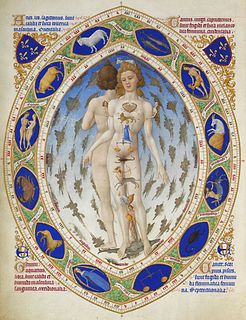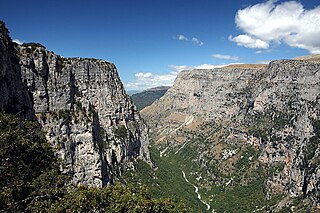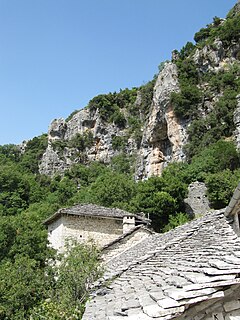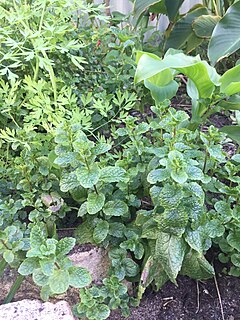
Traditional medicine comprises medical aspects of traditional knowledge that developed over generations within the folk beliefs of various societies, before the era of modern medicine. The World Health Organization (WHO) defines traditional medicine as "the sum total of the knowledge, skills, and practices based on the theories, beliefs, and experiences indigenous to different cultures, whether explicable or not, used in the maintenance of health as well as in the prevention, diagnosis, improvement or treatment of physical and mental illness". Traditional medicine is often contrasted with scientific medicine.

Medieval medicine in Western Europe was composed of a mixture of pseudoscientific ideas from antiquity. In the Early Middle Ages, following the fall of the Western Roman Empire, standard medical knowledge was based chiefly upon surviving Greek and Roman texts, preserved in monasteries and elsewhere. Medieval medicine is widely misunderstood, thought of as a uniform attitude composed of placing hopes in the church and God to heal all sicknesses, while sickness itself exists as a product of destiny, sin, and astral influences as physical causes. On the other hand, medieval medicine, especially in the second half of the medieval period, became a formal body of theoretical knowledge and was institutionalized in the universities. Medieval medicine attributed illnesses, and disease, not to sinful behaviour, but to natural causes, and sin was connected to illness only in a more general sense of the view that disease manifested in humanity as a result of its fallen state from God. Medieval medicine also recognized that illnesses spread from person to person, that certain lifestyles may cause ill health, and some people have a greater predisposition towards bad health than others.

Ethnobotany is the study of a region's plants and their practical uses through the traditional knowledge of a local culture and people. An ethnobotanist thus strives to document the local customs involving the practical uses of local flora for many aspects of life, such as plants as medicines, foods, intoxicants and clothing. Richard Evans Schultes, often referred to as the "father of ethnobotany", explained the discipline in this way:
Ethnobotany simply means ... investigating plants used by societies in various parts of the world.

The Vikos–Aoös National Park is a national park in the region of Epirus in northwestern Greece. The park, founded in 1973, is one of ten national parks in mainland Greece and is located 30 kilometres (19 mi) north of the city of Ioannina in the northern part of the Pindus mountain range. It is named after the two major gorges of the area and encompasses 12,600 hectares of mountainous terrain, with numerous rivers, lakes, caves, deep canyons, dense coniferous and deciduous forest. The park is part of the Natura 2000 ecological network and one of UNESCO Geoparks and spans an elevation range from 550 to 2,497 meters. Over 100,000 people visit the park each year and take part in activities including rafting, canoe-kayaking, hiking and mountain biking.

Zagori, is a region and a municipality in the Pindus mountains in Epirus, in northwestern Greece. The seat of the municipality is the village Asprangeloi. It has an area of some 1,000 square kilometers and contains 46 villages known as Zagori villages, and is in the shape of an upturned equilateral triangle. Ioannina, the provincial capital, is at the southern point of the triangle, while the south-western side is formed by Mount Mitsikeli (1,810m). The Aoos river running north of Mt Tymphe forms the northern boundary, while the south-eastern side runs along the Varda river to Mount Mavrovouni (2,100m) near Metsovo. The municipality has an area of 989.796 km2. The population of the area is about 3,700, which gives a population density of 4 inhabitants per square kilometer, very sparse when compared to an average of 73.8 for Greece as a whole.

Vitsa is one of the largest villages of central Zagori. It is situated at an altitude of 955m on a mountain slope near the Vikos gorge with roads linking it to Greek National Road 6. Vitsa is famous for its old double-arched bridge of Missios.

Papingo is a former community (1919-2010) in the Ioannina regional unit, Epirus, Greece. Since the 2011 local government reform it has become part of the municipality of Zagori, of which it is a municipal unit. The municipal unit has an area of 34.131 km2. It is located in the Vikos–Aoös National Park.
The history of wound care spans from prehistory to modern medicine. Wounds naturally heal by themselves, but hunter-gatherers would have noticed several factors and certain herbal remedies would speed up or assist the process, especially if it was grievous. In ancient history, this was followed by the realisation of the necessity of hygiene and the halting of bleeding, where wound dressing techniques and surgery developed. Eventually the germ theory of disease also assisted in improving wound care.

The Vikos Gorge or Vikos Canyon is a gorge in the Pindus Mountains of north-western Greece. It lies on the southern slopes of Mount Tymphe with a length of about 32 km, depth ranging from 120 to 1350 m, and a width ranging from 2500 m to only a few meters at its narrowest part.

The Monastery of Saint Paraskevi is an abandoned monastery situated on the edge of Vikos Gorge, in the region of Zagori,, northwestern Greece. The monastery founded at 1413–1414, consists of a small stone-built chapel, the oldest preserved in Zagori, and offers panoramic views to the gorge.
A monastic garden was used by many people and for multiple purposes. Gardening was the chief source of food for households, but also encompassed orchards, cemeteries and pleasure gardens, as well as providing plants for medicinal and cultural uses. Gardening is the deliberate cultivation of plants herbs, fruits, flowers, or vegetables.
Koukouli is a village of the Zagori region, in the municipal unit of Tymfi. It is situated at the southern end of the Vikos Gorge.
Tsepelovo is a village in the Zagori region. It stands at a height of 1,200 meters in a panoramic location on the mountain range of Tymfi. It is the biggest of the 45 villages of Zagori and it was the seat of Tymfi municipality. Its name is of Slavic origin. It lies in the middle of the Vikos–Aoös National Park, 48 km from Ioannina.
Monodendri is a village in the Ioannina regional unit in Greece. It is part of the municipal unit of Central Zagori in the Zagori region, and is located 41 kilometres (25 mi) north of the city of Ioannina.
The practice of medicine and therapeutics in Cyprus has its roots into ancient times. Many of the classical practices were well documented at the time by Greek or Roman physicians, and some therapies have originated from Cyprus itself.

Skamneli is a village in the Zagori region, 54 km north of Ioannina. It is built in the fringes of mountain Tymfi, at a height of 1160 m.
Kapesovo is a village in the Zagori region, it is 43 km north of Ioannina. The name Kapesovo is Slavic and means garden. The village used to be more south near Baya (Kipi), where many vegetables were grown and it was called "Kapouska". It was later moved to its current position for health reasons. There is a big cliff next to the village called "Kapesios" and the name of the village might be related to it.

Vradeto is a village in the Greek Zagori region. It lies at a height of 1340m on Mt Tymphe in the Pindus mountain range. It is the highest of the 44 villages of Zagori.

In general use, herbs are a widely distributed and widespread group of plants, excluding vegetables and other plants consumed for macronutrients, with savory or aromatic properties that are used for flavoring and garnishing food, for medicinal purposes, or for fragrances. Culinary use typically distinguishes herbs from spices. Herbs generally refers to the leafy green or flowering parts of a plant, while spices are usually dried and produced from other parts of the plant, including seeds, bark, roots and fruits.
The history of herbalism is closely tied with the history of medicine from prehistoric times up until the development of the germ theory of disease in the 19th century. Modern medicine from the 19th century to today has been based on evidence gathered using the scientific method. Evidence-based use of pharmaceutical drugs, often derived from medicinal plants, has largely replaced herbal treatments in modern health care. However, many people continue to employ various forms of traditional or alternative medicine. These systems often have a significant herbal component. The history of herbalism also overlaps with food history, as many of the herbs and spices historically used by humans to season food yield useful medicinal compounds, and use of spices with antimicrobial activity in cooking is part of an ancient response to the threat of food-borne pathogens.










